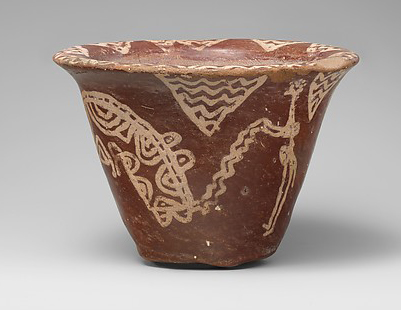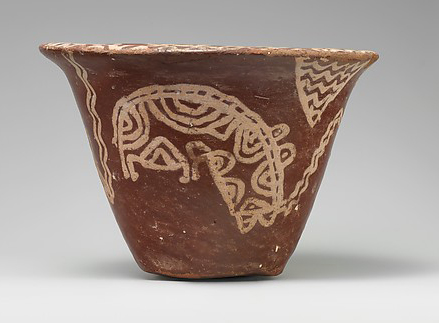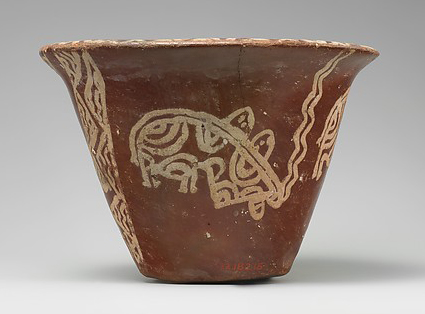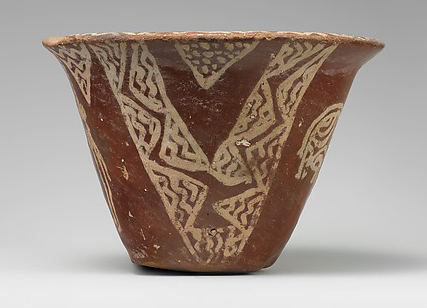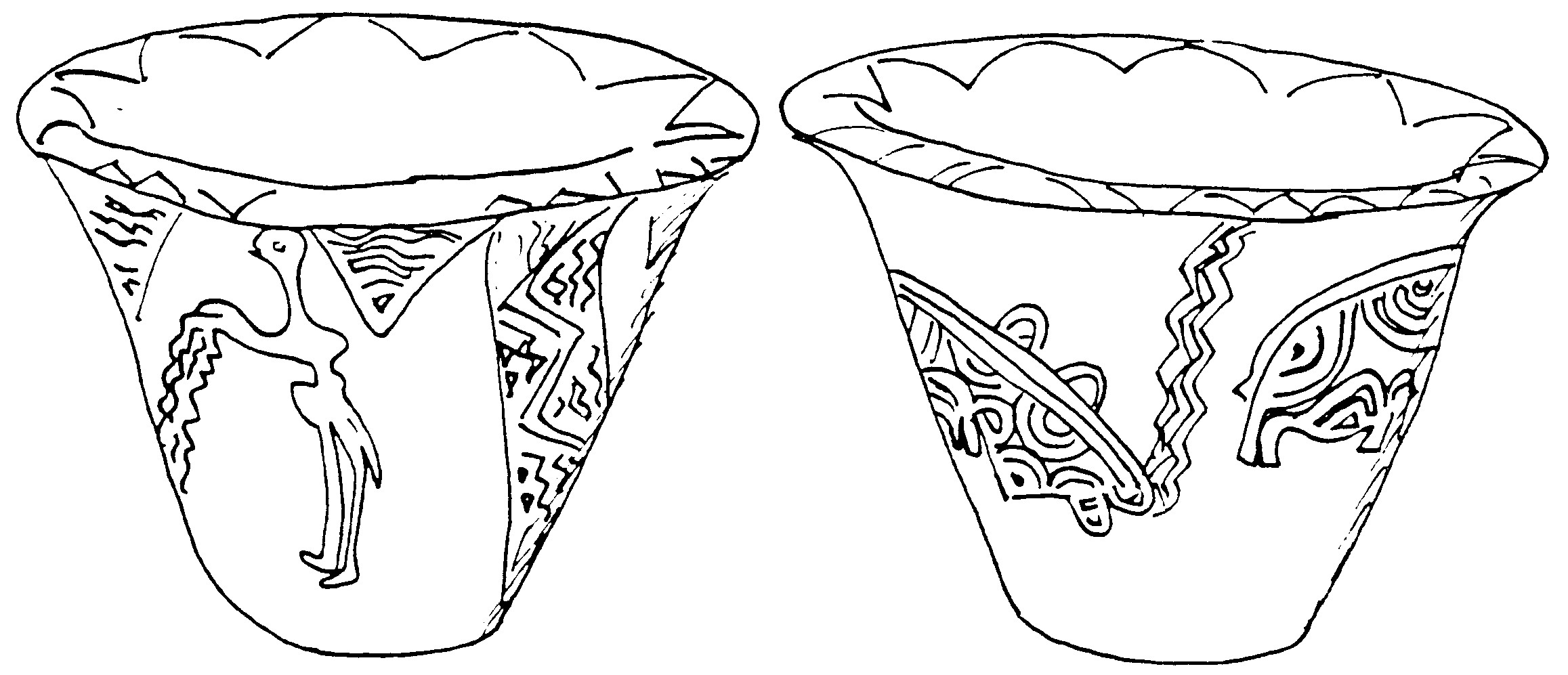C-Ware – beaker C-0447
By Osmani, Diona
, Archaeological context unknown. 1912 : Purchased in Egypt from Ghirgis and Abd el-Nour Ghabriel, 1912.New York, Metropolitan Museum of Art, MMA 12.182.15.
Date : 3700-3450 BCE
General range of C-ware production
Material : Nile silt (Painted)
Preservation : Complete
Decoration preservation : Very good
Decoration
Two hippopotami, one bigger than the other, following each other are represented with ropes attached to their muzzles. The ears, or eyes, appear as large loops on the top of their heads. They have short legs and short tails. Their bodies are filled with semi-concentric designs. While the rope of the second hippopotamus is only linked to the rim of the vessel, that of the first is held by a man. Myers discussed the representation and excluded a magical interpretation of a vague “vapour rising from the nostrils”, as well as the idea that the man is feeding the animals. The interpretation he favoured is, however, difficult to follow: he understood the man as holding the animals on a leash attached to their nostrils by two rings. Behrmann correctly rejected this interpretation, suggesting that the animals are harpooned in the muzzle. The rest of the decoration consists of downturned triangles filled with wavy lines and, on one occasion, with dots, as well as a chevron design filled with series of triangles filled with wavy lines.
Dimensions (cm)
8.5
12.7
Additional information
Open
Vi 149
direct
flat base
Outside and inside lip
C-Ware
References
2020
Hippopotamus hunting in Predynastic Egypt: reassessing archaeozoological evidence. Achaeofauna 29
, 141, fig. 3.2015
De la figure anthropomorphe prédynastique à l’émergence de l’image de Pharaon: pour une approche transversale de l’imagerie pré- et protodynastique égyptienne (Nagada I-Nagada III, 3900-2700 av. J.-C.). Archéologie et Préhistoire. PHD thesis, University of Strasbourg. Strasbourg
, 1352, VC_IND_005.